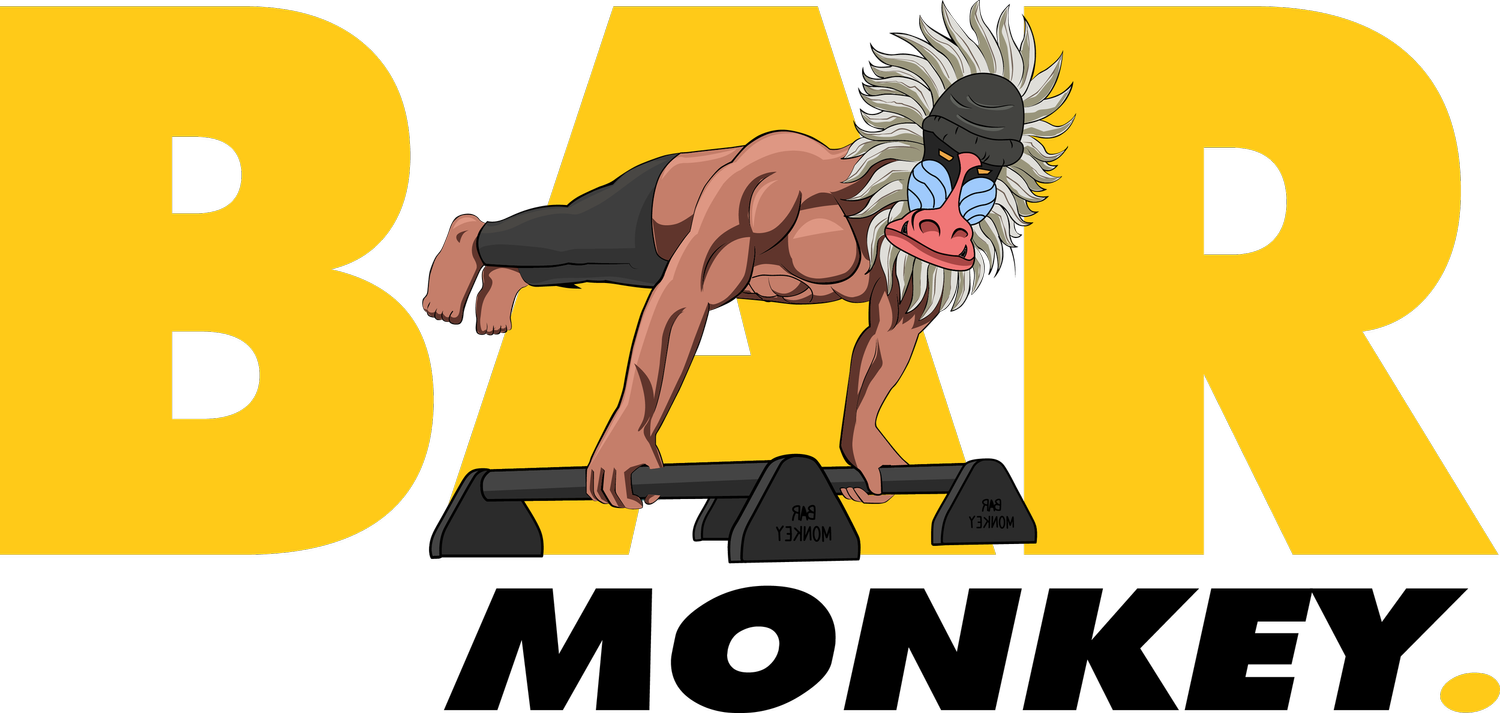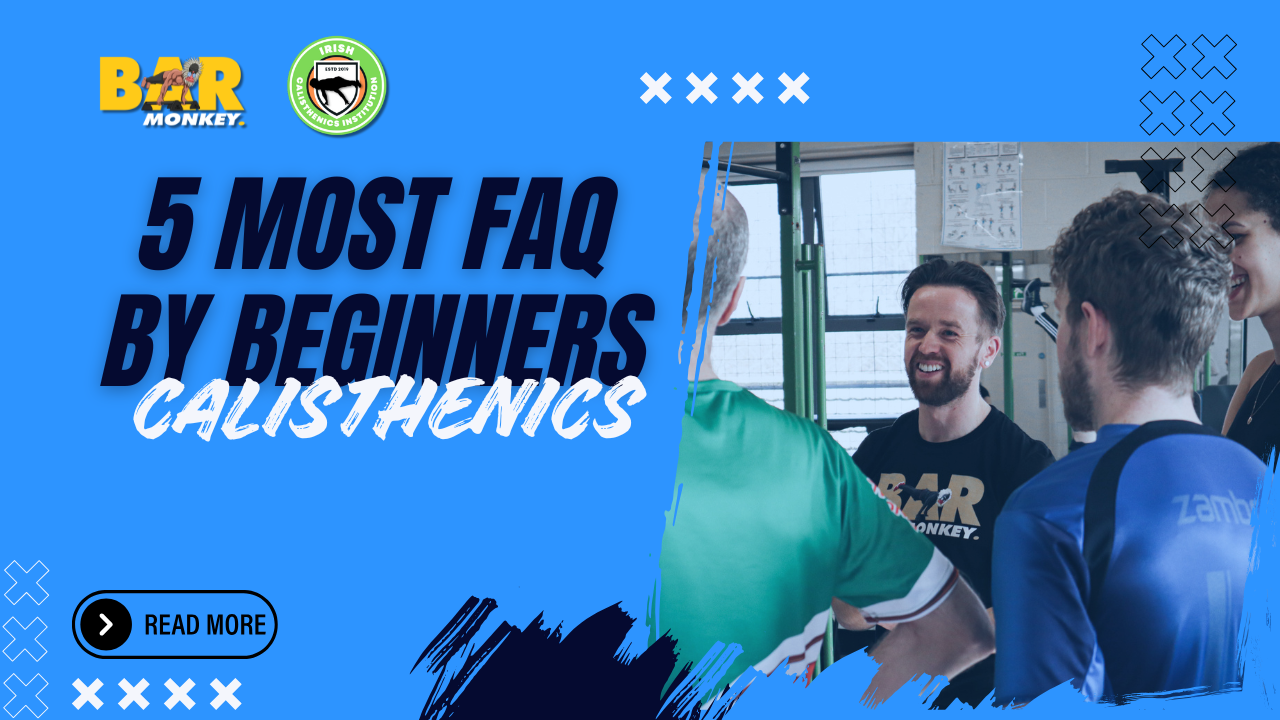5 MOST FAQ BY CALISTHENICS BEGINNERS ANSWERED
In this article, we are looking at what we consider the 5 most frequently asked questions when people join our club or start calisthenics! With our new facility in Gorey, as you can imagine there is a lot of new members and only entering the sport now, so I thought it would be a good time to look at what we have been asked the most since opening!
1. How long will it take me to achieve ‘X’ – and you can insert any move here!
Answer: no clue! The reason for this is every person is different and unique. We all have a completely different set of backgrounds, experiences and genetics which mean the time it takes to learn a new skill is completely varied from person to person. Over our ten years as a club, we have had people come in on their first day and learn front lever, while others are in the club ten years and still don’t have one, but could have strengths elsewhere. Because Calisthenics is so varied, you most likely have strengths in different areas and will pick different moves up quicker than others. For example, you could have good balance and find a handstand easier to learn than a muscle-up for example. To get more advanced, some people prefer pull movements ( front lever ) compared to push movements ( planche ) and might see progress in one of those areas quicker than the other. Some might prefer dynamic movements to strength based ones and find those more enjoyable for example, so their training is tailored to suit that.
My recommendation is to enjoy the process and not just look at the end goal. Create mini targets along the way ( i.e tuck front lever progressing from 3 seconds to 6 ) and identify your strengths so that you can work on movements that suit you as an individual.
2. I joined because I thought this would be good for mobility.
I’m not trying to scare anyone off, but calisthenics is a sport like any other, and we are a consequence of repeated movement patterns that can decrease mobility! For example, if you only train muscle-up, you are repeatedly training your anterior chain, causing your shoulders to pull forward and ‘close the chest’ giving you the ‘gorilla posture’. I say this only to remind people that to get good at mobility, you have to actually do mobility work. This can be included within your sessions, but be sure not to fall back on the idea that calisthenics training is mobility training. They are not the same. You can incorporate mobility within your sessions and work the opposing muscle groups that you have used in a session. If we continue with the muscle-up example, having trained the anterior chain, we can then use stretches to open this area back out, and also incorporate strength work for our posterior chain that balances out what we done during that session.
3. You must have a gymnastics background?
Nope! I don’t mean to compare myself to a gymnast because the majority have spent their lives training, but there is a common misconception that everyone in calisthenics has previously done gymnastics. The majority of us haven’t! I started calisthenics at 21/22 and have been training in the sport specifically for 12 years ( at the time of writing ). This assumption is like asking a successful footballer ( soccer ) if they played GAA growing up. We are two different sports, and sure there is elements that crossover, but we diverge very differently as you begin to explore both. You don’t need to have a gymnastics background to start our sport!
4. I should probably strengthen up before trying freestyle?
Nope! The idea of general strength (pull-ups, dips, push-ups etc) being required before trying skills and tricks doesn’t crossover to relative strength. Highlighting people’s individual strengths and interests is far more important! For example, a dragon 360 is a movement that requires a lot of coordination with the hand movement and hip rotation, but I don’t need to be able to do 10 pull-ups before I can try it! Being able to move in this way is completely different than general strength, and if you limit yourself to thinking I need a certain amount of pull-ups (as an example ) before I can try dynamic skills, you might never actually try them! If you are interested in freestyle and dynamic skills, then with guided progressions from a coach you can start from there, identify your strengths and start to build up a repertoire of movements that suit you!
5. Have you ever been injured?
This one I am asked a lot! And the answer is yes, but not as frequently as people probably think. I have had a few contact injuries (hitting my head off the bar wasn’t too fun!) and I have had a few from mistakes I made when trying tricks. But to be honest, the majority have just been from gradual overuse which led to niggles and wears and tears. I also tell people these are the consequences of any sport. The more you familiarise yourself with the movement patterns, they become more autonomous and you reduce your risk of injury. Also working with a coach who has a good anatomical understanding of the sport ( what muscle groups are used etc ) can reduce this risk of muscle injuries as they will balance out your training, making sure you work opposing muscle groups evenly. Personally, I am aware of my own injuries, and the common ones within the sport through overuse, so we actively work on avoiding these pitfalls with anyone that is training with us so they can train longer and reduce the risk! ( you can never eradicate injuries 100% - sorry! )
If you have ventured into the world of calisthenics and bodyweight training, I hope you found this article helpful! For more like this be sure to subscribe below where you will receive tips like this weekly, and enter the world of calisthenics!
Want to get more specific and develop calisthenics skills?
Be sure to check our Calisthenics Intensive Seminar January 4th.
Three Workshops. Choose One. Handstand | Freestyle | Muscle-Up


